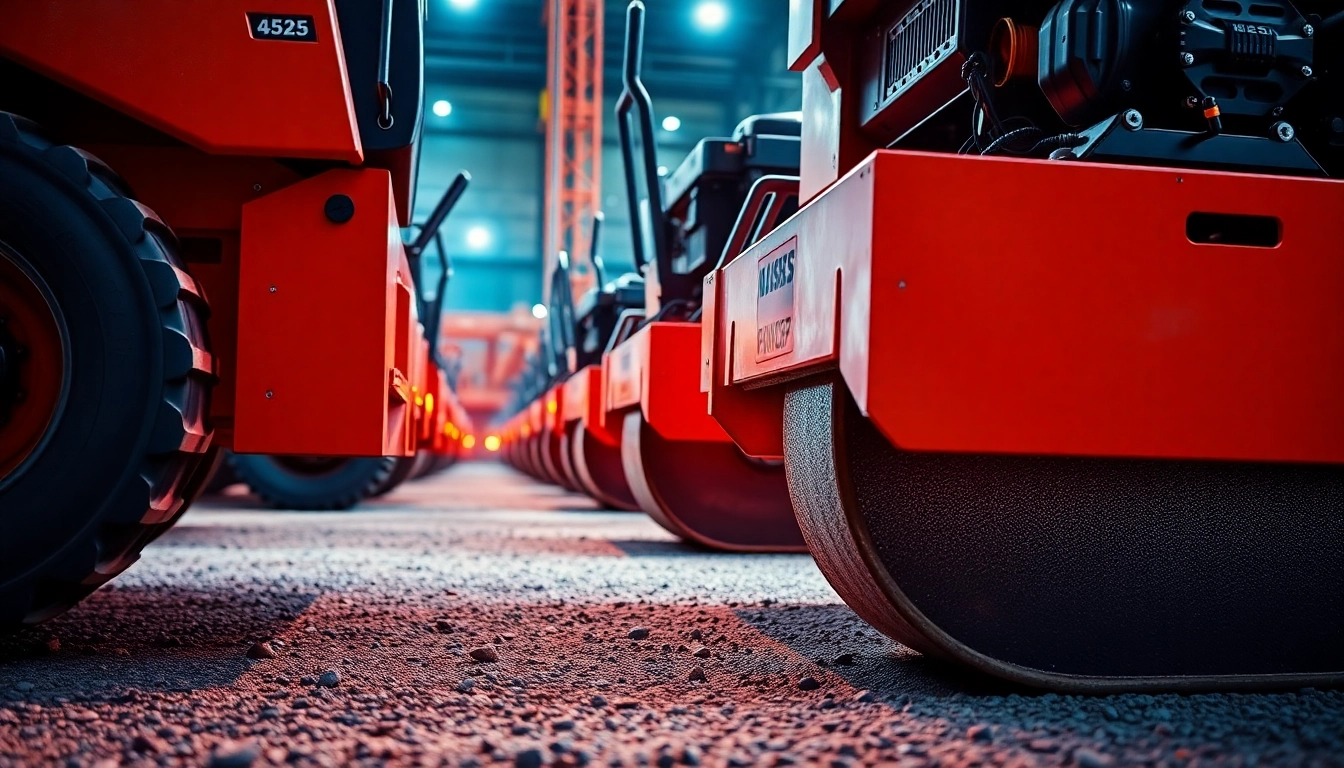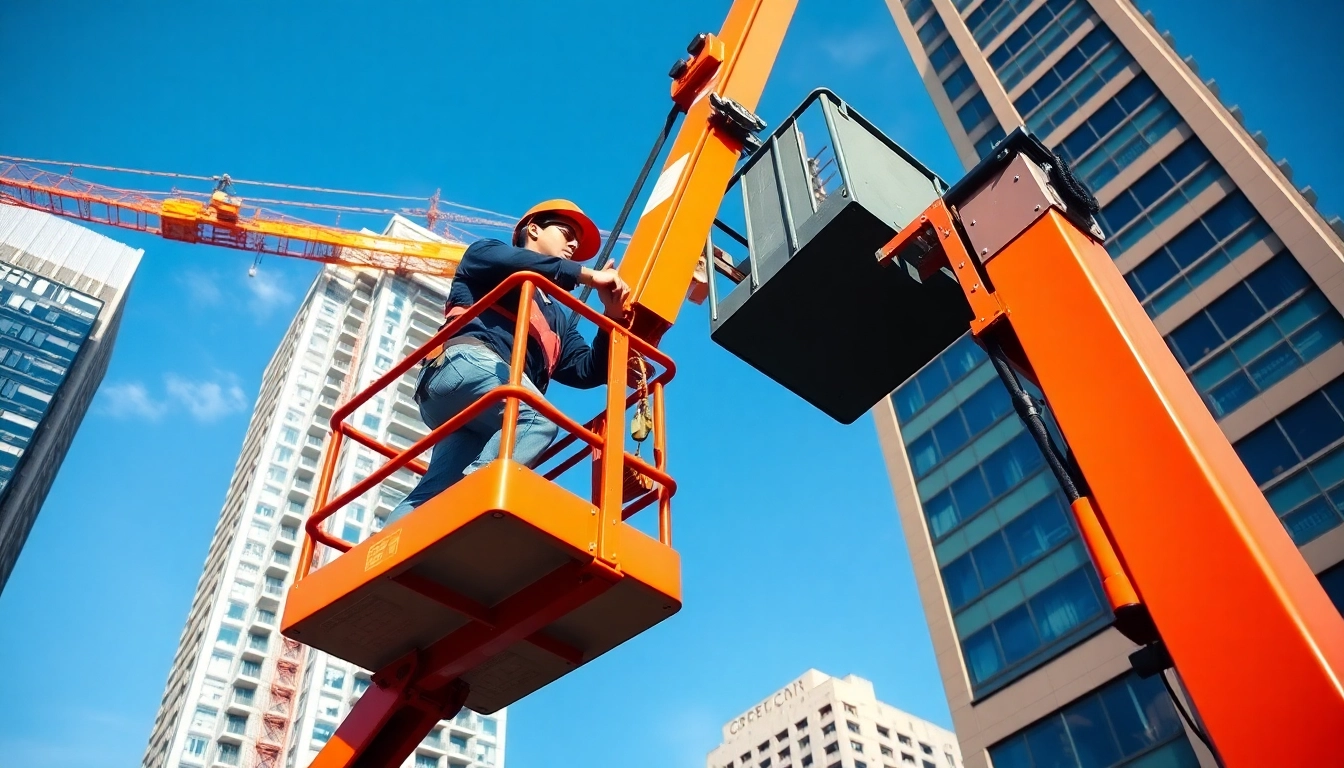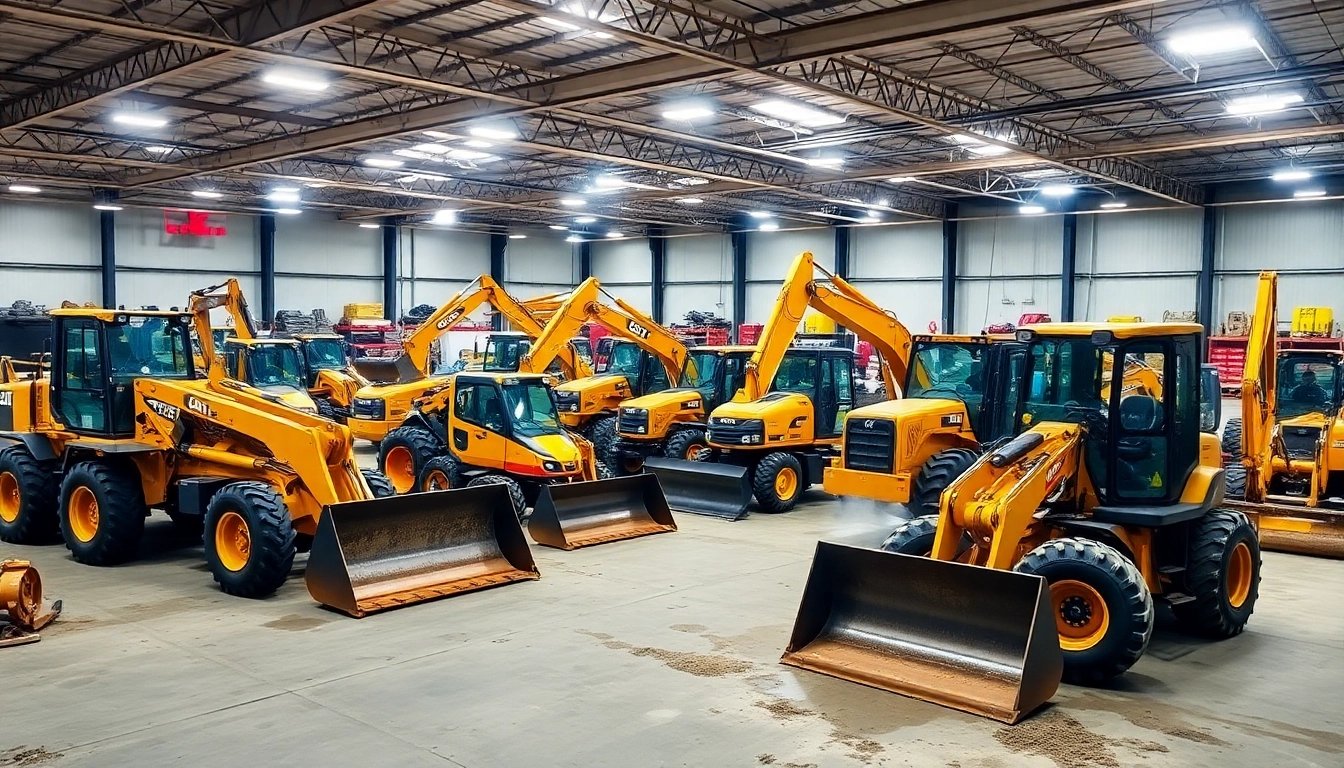Understanding Compactors and Their Role in Construction
Compactors are essential tools in the construction and landscaping industries, utilized to increase soil density, stabilize base materials, and create a solid foundation for various structures. From preparing the ground for paving to ensuring the longevity of walkways and roads, compactors play a pivotal role in achieving durable, professional results. For contractors, landscapers, and DIY enthusiasts alike, understanding the different types of compactors, their features, and applications is fundamental to selecting the right equipment for the job. Engaging in compactors rental provides flexibility, cost-efficiency, and access to specialized gear that might otherwise be prohibitive to purchase outright. This comprehensive guide aims to demystify the world of compactors, offering insights, practical advice, and the latest industry trends to support your construction projects with confidence.
Types of Compactors Available for Rent
Vibratory Plate Compactors (Wacker Plates)
Among the most common compactors, vibratory plate compactors—or Wacker plates—are designed for small to medium-sized projects requiring precise soil and aggregate compaction. Characterized by their flat, heavy steel plates that vibrate rapidly, these machines are ideal for prepping areas such as patios, sidewalks, and small pathways. They come in petrol, diesel, or electric variants, offering versatility for various site conditions. Their compact size allows for easy maneuverability in confined spaces, making them a favorite for landscapers and contractors dealing with tight or intricate areas.
Rammers (Jumping Jack Compactors)
Rammers, or jumping jacks, are manual or powered machines that deliver concentrated force through a piston to compress compacted materials like soil and gravel. They are especially effective for trench work, foundation filling, and areas with limited access. Their vertical, pounding motion can penetrate with precision into hard or uneven surfaces, ensuring thorough compaction even in challenging conditions.
Sittable & Forward/Reverse Plate Compactors
These models are larger and often include features like walk-behind operation with forward and reverse movement. They are suitable for larger projects involving asphalt, dense soil, or gravel, where higher compaction force and efficiency are necessary. These are typically powered by petrol or diesel engines, offering durability and extended use for substantial construction tasks.
Vibrating Rollers & Heavy-Duty Compactors
For large-scale projects like roadworks, industrial bases, or earthworks, vibrating rollers and heavy-duty compactors provide extensive coverage and high compaction force. They include single drum or double drum rollers, ride-on configurations, and can handle substantial loads while maintaining uniform compaction. These are essential for infrastructure projects demanding high standards of stability and durability.
Key Features and Specifications
Engine Power & Fuel Type
Compactors vary significantly in engine capacity, from small electric models suitable for light tasks to powerful diesel or petrol engines designed for heavy-duty applications. Choosing the right engine type depends on project scope, duration, and site accessibility. Diesel compactors often offer longer operating hours and higher torque, suitable for large projects, whereas electric models are quieter, cleaner, and ideal for indoor or noise-sensitive environments.
Plate Size & Weight
The dimensions and weight of compactors directly influence their performance and ease of use. Smaller plates (around 200-300mm wide) excel in tight spaces, while larger plates (up to 600mm or more) cover more area per pass and offer higher compaction levels. Heavier machines exert more force, essential for densely packed soils, but require careful handling and operator expertise.
Vibration Frequency & Amplitude
Two critical technical parameters—vibration frequency (measured in Hz) and amplitude—determine the effectiveness of compaction. Higher frequencies and amplitudes typically lead to better soil densification, but the ideal settings depend on material type and site conditions. Advanced models may include adjustable settings to optimize performance for different materials.
Operational Features & Ergonomics
Ease of operation, handle ergonomics, noise levels, and safety features like automatic shut-off or vibration damping enhance worker comfort and safety. Modern compactors also include features such as variable speed controls, easy-start mechanisms, and durable construction for prolonged use.
Common Applications and Use Cases
Paving & Road Construction
Compactors are vital in preparing subgrades and base layers for asphalt paving, ensuring stability and longevity. Proper compaction reduces air voids, preventing future shifting or cracking.
Landscaping & Garden Projects
In landscaping, compactors help create solid bases for patios, walkways, and retaining walls. They are also used to level ground and compact soil to prevent future settling.
Foundation & Trench Work
Small to medium-sized compactors assist in filling trenches, preparing foundations, and stabilizing subsoils. Rammers are particularly effective here, especially in confined spaces.
Concrete & Asphalt Compaction
Heavy-duty vibratory rollers and plate compactors are used for dense asphalt and concrete base layers, vital for constructing durable roads, runways, and industrial floors.
Industrial & Infrastructure Projects
Large-scale earthworks, embankments, and commercial developments utilize high-capacity rollers and vibratory compactors to achieve requisite strength and stability standards.
How to Choose the Right Compactor Rental for Your Needs
Assessing Project Size and Site Conditions
Begin by evaluating the scope of your project—smaller, precise work may only require a compact plate, whereas expansive earthworks necessitate heavy rollers. Site conditions such as confined spaces, soil type, moisture levels, and access also influence the choice. For example, unstable or loose soils benefit from vibratory plates with adjustable settings, while compact, dense soils might require larger static or vibrating rollers.
Matching Equipment Types to Materials
Different materials respond variably to compaction. Cohesive soils like clay demand higher vibration amplitudes, whereas granular materials like gravel compact better under continuous vibration. Asphalt applications typically require robust rollers to achieve necessary density, while subsoil preparation might call for smaller, versatile plate compactors.
Budgeting and Cost Considerations
Rental costs are influenced by machine size, power, and duration of hire. Smaller electric plates might cost less per day, but repetitive passes or larger projects may justify renting more powerful equipment. Collaborate with local rental providers for transparent pricing, and consider the total cost for the project—including delivery, operator training (if needed), and potential damage waivers. An accurate assessment prevents overspending and ensures optimal equipment utilization.
Step-by-Step Guide to Renting a Compactor
Finding Local Rental Providers
The first step involves researching reputable rental companies within your area. Online directories, industry recommended providers, and local hardware stores often offer rental options. Look for providers with positive reviews, a wide selection of equipment, and clear rental terms. Many suppliers now offer online booking, making the process more convenient.
Making a Reservation and Delivery Options
After selecting a provider, confirm equipment availability and reserve your machine ahead of time, especially during peak construction seasons. Discuss delivery and pickup services to save time and effort on transportation. Many rental companies offer flexible delivery windows, including same-day or next-day options, ensuring your project timeline remains on track.
Rental Periods and Terms Review
Review rental durations—daily, weekly, or monthly—based on your project needs. Clarify terms related to damage deposits, usage limitations, and maintenance responsibilities. Proper documentation reduces misunderstandings and ensures a smooth rental experience. Always inspect equipment upon arrival for any pre-existing damage and familiarize yourself with operational instructions.
Best Practices for Using Compactors Safely and Effectively
Pre-Use Inspection and Setup
Before operating, conduct a thorough inspection for loose parts, hydraulic leaks, or damaged components. Ensure all safety features are functioning. Set up the machine on a stable, level surface, and attach accessories securely. Confirm the machine’s controls and safety switches are operational, and wear appropriate PPE, including ear and eye protection.
Proper Operation Techniques
Start the machine following manufacturer instructions. Keep a firm grip on handles, and operate at consistent speeds. Move the compactor in overlapping passes to ensure uniform coverage. For soil, avoid overworking areas, which can lead to instability. In asphalt or concrete, adhere to recommended compaction patterns to prevent raveling or surface damage. Pace the work to avoid operator fatigue and maintain precision.
Maintenance and Post-Use Care
After use, clean the equipment of debris and check for signs of wear. Perform minor lubrication if applicable, and report any damage to the rental provider before returning. Store the compactor in a sheltered environment to prevent corrosion and deterioration. Regular maintenance prolongs the lifespan and preserves performance quality.
Performance Monitoring and Maximizing ROI from Compactors
Tracking Project Progress
Implement quality control measures by documenting compaction efforts. Use moisture content testing and density gauges to verify that specifications are met. Maintaining detailed records helps in assessing whether the equipment meets project standards and informs future rental decisions.
Common Challenges and Troubleshooting
Challenges include equipment overheating, uneven compaction, and mechanical failures. Preventative measures—such as adhering to operational limits, avoiding overly wet soils, and scheduling regular maintenance—minimize downtime. When issues arise, consult the manufacturer’s troubleshooting guides or contact the rental provider for professional assistance.
Evaluating Rental Performance and Cost Efficiency
Assess your ROI by comparing project timelines, quality outcomes, and rental expenses. Efficient use of the right equipment reduces labor costs and accelerates completion. Investing in compatible, high-performance compactors—either through rental or purchase—can significantly enhance project efficiency and profitability.



